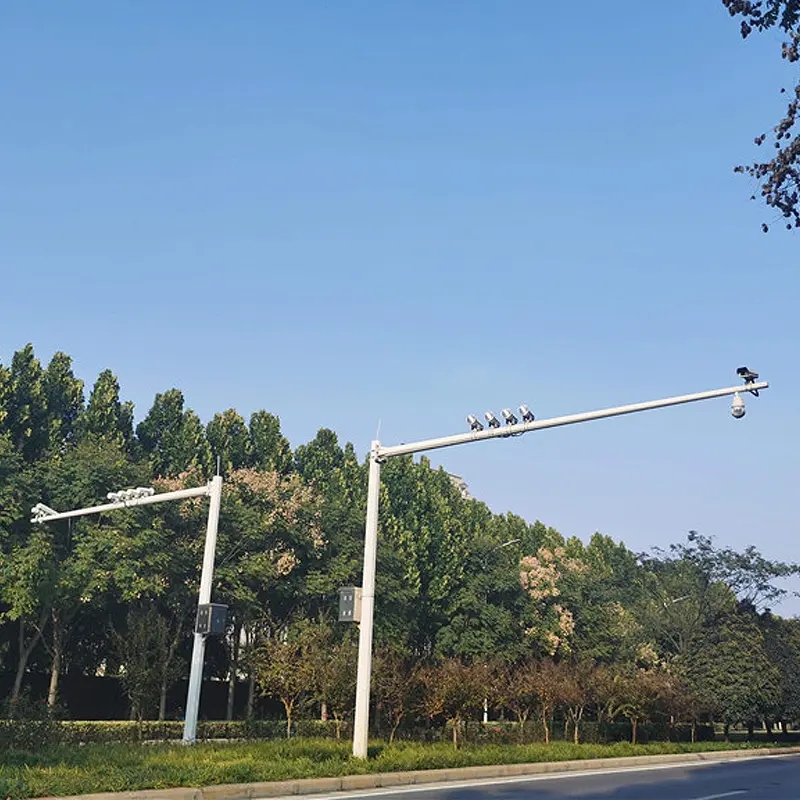Traffic signal poles are an important part of urban infrastructure and play a vital role in managing vehicular and pedestrian traffic. As cities have grown and evolved, the design and specifications of these poles have changed to meet the needs of modern traffic management systems. One of the most common questions about traffic signal poles is, “How big are traffic signal poles?” In this article, we’ll explore the dimensions, materials, and considerations involved in traffic signal pole manufacturing, while also highlighting the expertise of leading signal pole manufacturer Qixiang.
Traffic signal pole dimensions
The size of a traffic signal pole can vary greatly depending on a number of factors, including its intended use, location, and the specific requirements of the traffic management system. In general, traffic signal poles range from 10 to 30 feet in height. The height depends on visibility needs and the type of intersection they serve. For example, poles at busy intersections may be taller to ensure that the signal can be seen from a distance, while poles in residential areas may be shorter.
Traffic signal poles typically range from 4 to 12 inches in diameter. The thickness of the pole is also an important consideration, as it must be strong enough to withstand a variety of environmental conditions, including wind, rain, and snow. The base of the pole is often wider to provide stability, especially in areas prone to high winds or heavy traffic.
Materials used for traffic signal poles
Traffic signal poles are typically made from materials such as steel. Steel is a popular choice for traffic signal poles due to its strength and durability. Steel poles can withstand harsh weather conditions and are less likely to bend or break under stress. They are often galvanized to prevent rust and corrosion, thus extending their lifespan.
Traffic signal light pole design considerations
When designing a traffic signal pole, several factors must be considered to ensure safety and functionality. These include:
Visibility
The height and location of the light pole must ensure that traffic lights are visible to drivers and pedestrians at a distance. This is particularly important at busy intersections where quick decision making is crucial.
Load capacity
Traffic signal poles must be designed to support the weight of the traffic signal and any attached equipment such as cameras or signage. Load capacity is a key factor in determining the material and size of the pole.
Wind resistance
In areas susceptible to strong winds, traffic signal poles must be carefully designed to withstand those wind forces. This may involve using thicker materials or designing poles with wider bases for added stability.
Aesthetics
In an urban setting, the appearance of a traffic signal pole affects the overall aesthetics of the area. Manufacturers typically offer a variety of designs and finishes to match the surrounding architecture.
Qixiang: Your trusted signal pole manufacturer
Qixiang is a professional signal pole manufacturer when it comes to sourcing high-quality traffic signal poles. With years of industry experience, Qixiang is committed to providing durable and reliable traffic poles that meet the specific needs of municipalities and traffic management departments.
Qixiang’s team of experts understands the importance of safety, visibility, and durability in traffic signal pole design. They work closely with customers to ensure that each pole meets the unique requirements of the location and intended use. Whether you need a standard traffic signal pole or a custom design, Qixiang has the expertise and resources to meet your needs.
In addition to manufacturing, Qixiang also provides competitive pricing and excellent customer service. They are committed to helping customers solve the complexities of traffic signal pole procurement, ensuring that the process from start to finish is smooth and efficient.
In conclusion
Traffic signal poles are an essential part of our cities’ infrastructure, and their size and design play a major role in ensuring safe and efficient traffic management.
Post time: Feb-05-2025







